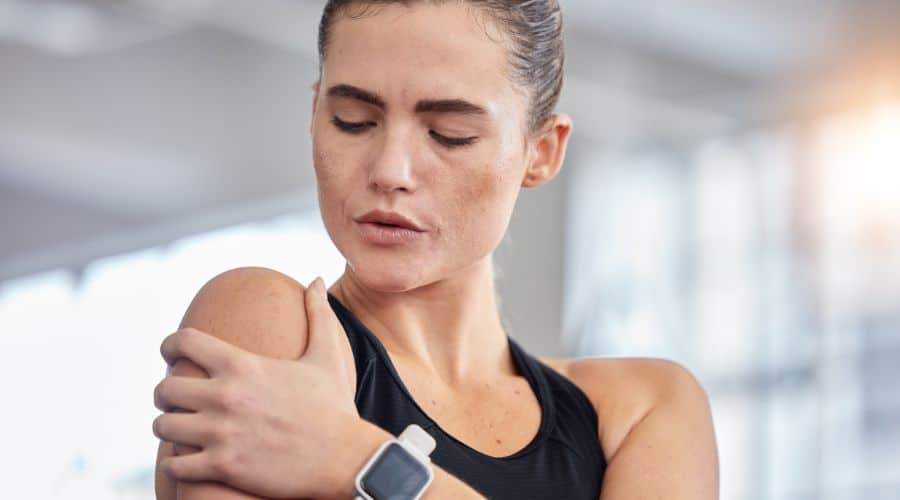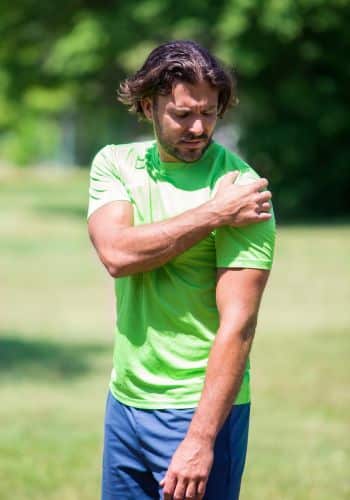How To ease your Labral Tear Pain
Labral Tear is a shoulder injury where the cartilage (labrum) that stabilizes the joint is torn, causing pain, weakness, and clicking sensations. It can result from trauma, repetitive motion, or dislocation, with treatment ranging from therapy to surgery.
What is a Labral Tear?
Labrum or labral tears are usually associated with trauma (caused by a direct injury to the shoulder, such as falling on an outstretched hand), or instability of the shoulder.
The biceps tendon attaches to the front part of the labrum. The biceps is the large muscle on the front of your upper arm. Sports can cause injuries to the labrum when the biceps tendon pulls sharply against the front of the labrum. Baseball pitchers are prone to labral tears because the action of throwing causes the biceps tendon to pull strongly against the top part of the labrum. Weightlifters can have similar problems when pressing weights overhead. Golfers may tear their labrum if their club strikes the ground during the golf swing.
The soft labral tissue can be caught between the glenoid and the humerus. When this happens, the labrum may start to tear. If the tear gets worse, it may become a flap of tissue that can move in and out of the joint, getting caught between the head of the humerus and the glenoid. The flap can cause pain and catching when you move your shoulder. Several tendons and ligaments attach to the labrum that help maintain the stability of the shoulder. So when the labrum tears, the shoulder often becomes much less stable.
What are the symptoms of a labral tear?
Signs and Symptoms of a labral tear are painful clicking, locking, or popping during certain shoulder movements.
This may be followed by a vague aching for several hours.
At other times, the tear may not cause any pain.
Shoulder instability from a damaged labrum may cause the shoulder to feel loose, as though it slips with certain movements.
Instability may be present because the labrum is not doing its job of holding the ball in the socket.
Medical intervention for a labral tear typically involves an MRI for diagnosis and arthroscopic repair but labral tears are often hard to diagnose.
A special kind of labral tear, a superior labral anterior to posterior (SLAP) tear, often involves the biceps tendon as well.
Request A Call Back from a Physical Therapist
If you’re not quite ready to book an appointment yet and have some questions you would like answered first, click the link below to complete a form to get the conversation started.


What treatment options are available?
Nonsurgical Treatment
Your doctor’s first goal will be to control your pain and inflammation. Initial treatment for pain control is usually rest and anti-inflammatory medication, such as aspirin or ibuprofen. Your doctor may suggest a cortisone injection if you have trouble getting your pain under control. Cortisone is a strong anti-inflammatory medication. It can provide good relief, although its effects are temporary. Your doctor will probably have a physical or occupational therapist direct your rehabilitation program.
Your first therapy treatments will try to ease pain and inflammation by using such treatments as heat or ice. Hands-on treatment and various types of exercises are used to improve the range of motion in your shoulder and the nearby joints and muscles.
Later, you will do strengthening exercises to improve the strength and control of the rotator cuff and shoulder blade muscles. Your therapist will help you retrain these muscles to keep the ball of the humerus in the glenoid. This will improve the stability of your shoulder and help it move smoothly during all your activities.
You may need therapy treatments for four to six weeks. Most patients are able to get back to their activities with full use of their arm within this amount of time.
Request A Free Discovery Visit
Are you unsure if physical therapy is right for you? Take advantage of our FREE discovery visits which help identify your issues and if we can provide help!
** Please note there is no treatment given during one of our discovery visits. These visits are designed to evaluate your needs and ensure we can offer the help you need.
What can you expect with our Rehabilitation
Nonsurgical Rehabilitation
Even nonsurgical treatment requires a rehabilitation program.
Some evidence suggests that shoulder instability may eventually make labral tears worse.
The goal of therapy will be to strengthen the rotator cuff muscles to make the shoulder more stable.
At first you will do exercises with the therapist.
Eventually you will be put on a home program of exercise to keep the muscles strong and flexible.
This should help you avoid future problems.
